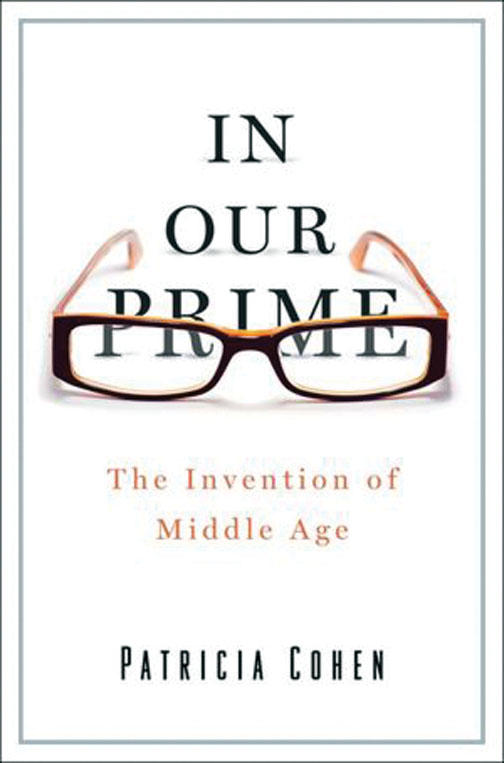For those of us confronted with streaks of silver hair, creaky knees, and other symptoms of advancing middle age, Patricia Cohen *86’s In Our Prime: The Invention of Middle Age (Scribner) may offer some small comfort. Americans did not always dread advancing years — in fact, Cohen points out that before the 20th century, middle age was considered the prime of life.
Cohen has written what she calls a biography of the idea of middle age, the years roughly from 40 to 65. Forty traditionally has been seen as the start, but as life expectancy has increased, midlife’s finish line has been extended.
She traces the concept’s social history from many angles — sociological, psychological, and cultural — from the 1860s to the present. She also tracks the roots of our negative associations, stemming, she suggests, from mass consumerism that extols the young and the new and from American individualism that stokes a constant search for fulfillment.
“The idea of middle age really came into Americans’ consciousness at the end of the 19th century,” says Cohen, who reports on the arts, culture, and intellectual life for The New York Times. By the 1920s, she writes, factory work favored those with speed and stamina — the young — and businesses began to create products such as face creams, while doctors trumpeted hormone rejuvenation therapies that promised to extend youthfulness.
A more psychological examination of midlife — by then seen as a distinct period of adult life — prevailed in the 1950s and 1960s, when “midlife crisis” entered popular parlance. But by the 1970s, looking at life in stages gave way to viewing life’s development as a process — and halting the process of aging became even bigger business (think anti-aging creams and plastic surgery). The current middle-aged generation, dubbed Alpha Boomers by Cohen, is more determined than ever to defy midlife stereotypes.
Cohen, who earned a master’s degree in public affairs from the Woodrow Wilson School, interviewed social scientists and neurologists, television producers and film directors, and advertisers and pharmaceutical company executives to learn how this cultural construct peculiar to our Western world has evolved.
Along with providing an extensive social history, Cohen introduces readers to the Midlife in the United States study (MIDUS), funded by the National Institutes of Health, which has been going on for 20 years. MIDUS research includes brain-imaging scans as researchers track the electrical activity in a subject’s brain, examine the brain’s anatomy, and take measurements to find out if people who have the greatest difficulty containing their negative emotions also have the most ailments. Researchers are testing the hypothesis that learning to control stress can reduce the risk of developing conditions like hypertension and type 2 diabetes. Cohen, 51, was game enough to have her own brain scanned and details the experience.
Researching In Our Prime changed Cohen’s perspective, she admits. Her father died while she was writing the book, adding poignancy to her consideration of life’s cycles. “It made me aware in a more personal and immediate way of how different episodes of your life look at different moments along the way,” says Cohen. “I’m trying to be more accepting of the passage of time. One has to try to make the best of life at any age. Rather than focus on what you’re losing, look at what you’re gaining.”
What she’s reading now: The Dovekeepers by Alice Hoffman.
What she likes about it: “It totally transported me to a completely different time and place, letting my imagination take a vacation from the 19th, 20th, and 21st centuries.”














No responses yet